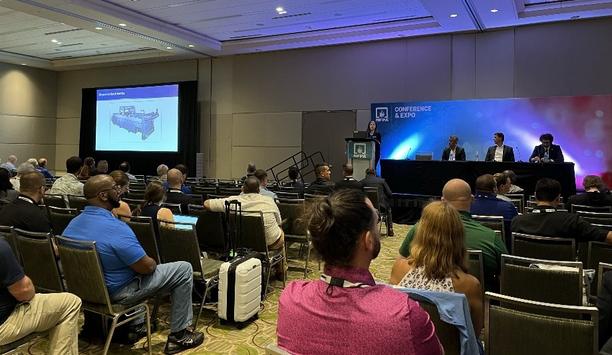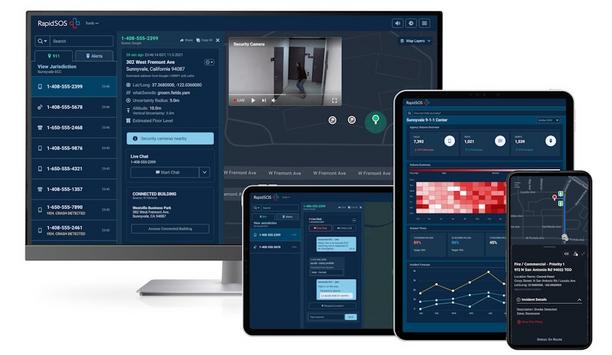According to the National Fire Protection Association (NFPA), promoting safety comes from a joint effort of knowledge, preparation, oversight and vigilance.
The ‘Fire and Life Safety Ecosystem’ includes eight elements, as listed by NFPA, and weakness in any of the eight creates conditions that foster risk. A recent NFPA report includes examples, drawn from current events, that illustrate the importance of each element of the Fire and Life Safety Ecosystem.
Government responsibilities
Citizens expect their governments at all levels to create a regulatory environment in which laws, policies and spending priorities are dictated by public safety needs. Safety laws were unenforced and/or code violations slipped through the cracks in several recent incidents.
Five children died August 11, 2019, when an overloaded extension cord running beneath a couch caught fire in an Erie, Pennsylvania, private home operating a daycare. In Washington, D.C., on August 18, 2019, a 40-year-old man and a 7-year old boy died in a fire. The single-family home was filled with code violations and was likely operating as an illegal rental.
Development and Use of Current Codes
The latest codes and standards establish minimum levels of safety to protect people and property
The latest codes and standards establish minimum levels of safety to protect people and property, and they must evolve to reflect the changing world. Flames consumed Notre-Dame de Paris on April 15, 2019, and it appears the historic cathedral was not following current codes developed to ensure heritage sites can be enjoyed by future generations.
There was no layered protection through alarms, sprinklers, and compartmentation, for instance. In another example, data analyzed from the 2018 Camp Fire wildfire, which destroyed much of Paradise, California, demonstrates the value of building codes. Among 350 single-family homes built after a stronger building code came into force, just over half were undamaged. In contrast, only 18% of the 12,100 homes built before the 2008 building code changes escaped damage, according to data analysis by publisher McClatchy.
NFPA Referenced Standards
Providing guidance to designers, installers, facility operators, and enforcers, referenced standards are a fundamental part of life safety. Fires are a regular occurrence in buildings under construction, renovation and demolition, despite standards aimed at preventing them. From 2013 to 2017, there was an estimated average of 3,840 fires per year in structures under construction.
NFPA’s Standard for Safeguarding Construction, Alteration, and Demolition Operations requires site operators to mitigate fire risks. Noncompliance was also a major factor in the 2017 Grenfell fire in the United Kingdom. The aluminum cladding that wrapped the outside of the high-rise apartment building, which did not follow referenced standards, contributed to the disaster.
Investment in Safety
Money and resources must be allocated to reduce losses from fire and related hazards
Money and resources must be allocated to reduce losses from fire and related hazards. A lack of fire sprinklers in a 25-story high-rise apartment building in Minneapolis contributed to deaths and injuries when a fire ripped through the building in November 2019.
Five people died and three others were hospitalized. Investment in the form of fire sprinklers would have also made a difference in containing a massive fire in North Shore, Wisconsin, at the Bayside apartment complex in March 2019. One hundred people were left homeless.
Skilled Workforce and Code Compliance
Ongoing training and professional development maximize skills of people who work in the fire and life safety fields. Personnel lacked familiarity with the fire suppression system recently at a warehouse distribution center for a British online supermarket. Their decision to shut off the sprinkler system for five minutes enabled the fire to grow beyond containment capabilities, costing the company over $120 million and 400 jobs. Fortunately, no one was hurt.
The places where people live and work are only as safe as the code compliance in place before, during and after construction. Firefighters in Natick, Mass., had to battle a massive blaze in a strip mall from the outside. They could not douse the fire from inside the building because of ‘hidden void spaces,’ created through multiple non-compliant remodels of the 100-year-old structure.
Preparedness and Emergency Response
The alert system also lets people know the actions they should take to stay safe
Prioritizing and investing money in preparedness and response capabilities before, during and after an emergency helps first responders meet community needs. Australia’s 2019 bushfire season benefited from lessons learned after the horrific Black Saturday fire in 2009, where 173 people were killed.
A centralized wildfire alert system now communicates to the public the location of the fire and provides an estimate of when it might reach a new location. The alert system also lets people know the actions they should take to stay safe. The new warning system likely saved lives in the 2019 wildfire season.
Informed Public Education
People take extra safety measures if they have the information they need and understand the risks and consequences. The Honolulu Fire Department created a provocative ad campaign showing a young child, comfortably in his bed.
The narrator explains that he is not sleeping but dying as smoke fills the home with no smoke alarms to wake the family. Such messages help to educate the public about the dangers of fire and needed prevention.





































